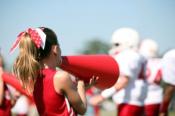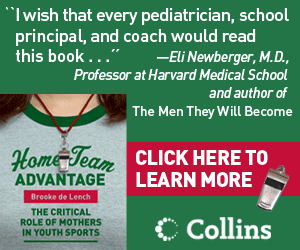Cheer and Spirit
- 88585 reads
- Printer-friendly version
Cheer/Spirit Resources
- The American Association of Cheerleading Coaches and Administrators. Founded in 1988, the AACCA is a non-profit educational association for the over 70,000 cheerleading coaches across the United States. Its members include youth, junior high school, high school, all star, and college or university coaches/advisors, as well as leading national cheerleading instructional companies dedicated to the safe and responsible practice of student cheerleading. Its website includes a parent's guide to cheerleading safety.
- The National Cheer Safety Foundation. Created by and for cheer parents, the site provides comprehensive cheer safety information and collects data on cheer injuries.
Cheerleading has grown dramatically over the past twenty-five years with the 2007-2008 high school participation survey showing that a total of 111,307 girls participated in competitive spirit in 4,510 high schools. Another 2,673 boys were involved in competitive spirit in 560 high schools. At the same time, cheer has evolved into two different kinds of activities: the traditional form in which participants wave pom-poms and lead cheers on the sports sideline (spirit) and the new, competitive form in which cheerleading squads compete against other squads in competitions (competitive cheer). Approximately 20 to 25 states now have a state championship for competitive cheer, but it is not clear how many states consider cheerleading a sport. Competitive cheeer has also become perhaps the most dangerous sports activity for girls, with high school and college cheerleaders accounting for over one-half of the catastrophic injuries to female athletes.
As a result, the focus in recent years has been on making the sport safer, with a number of schools, both high schools and colleges, and state high school athletic associations across the country now limiting the types of stunts that can be attempted by their cheerleaders.
MomsTeam's goal is to provide comprehensive information on competitive cheer: a primer on the rules of the sport, critical safety information, and videos and advice from experts, parents, and coaches.
But to do that we are going to need your help. If you are a parent of a child in competitive cheer, we hope you will share what you have learned with other MomsTeam parents. Please consider writing a blog, contributing an article, posting on and/or hosting a Forum, or becoming our competitive cheer expert. If you know of someone who used to coach competitive cheer who has knowledge to share, ask him or her to join. Together we can make MomsTeam a true community of cheer parents.
-Brooke de Lench, MomsTeam Founder and Editor-in-Chief










